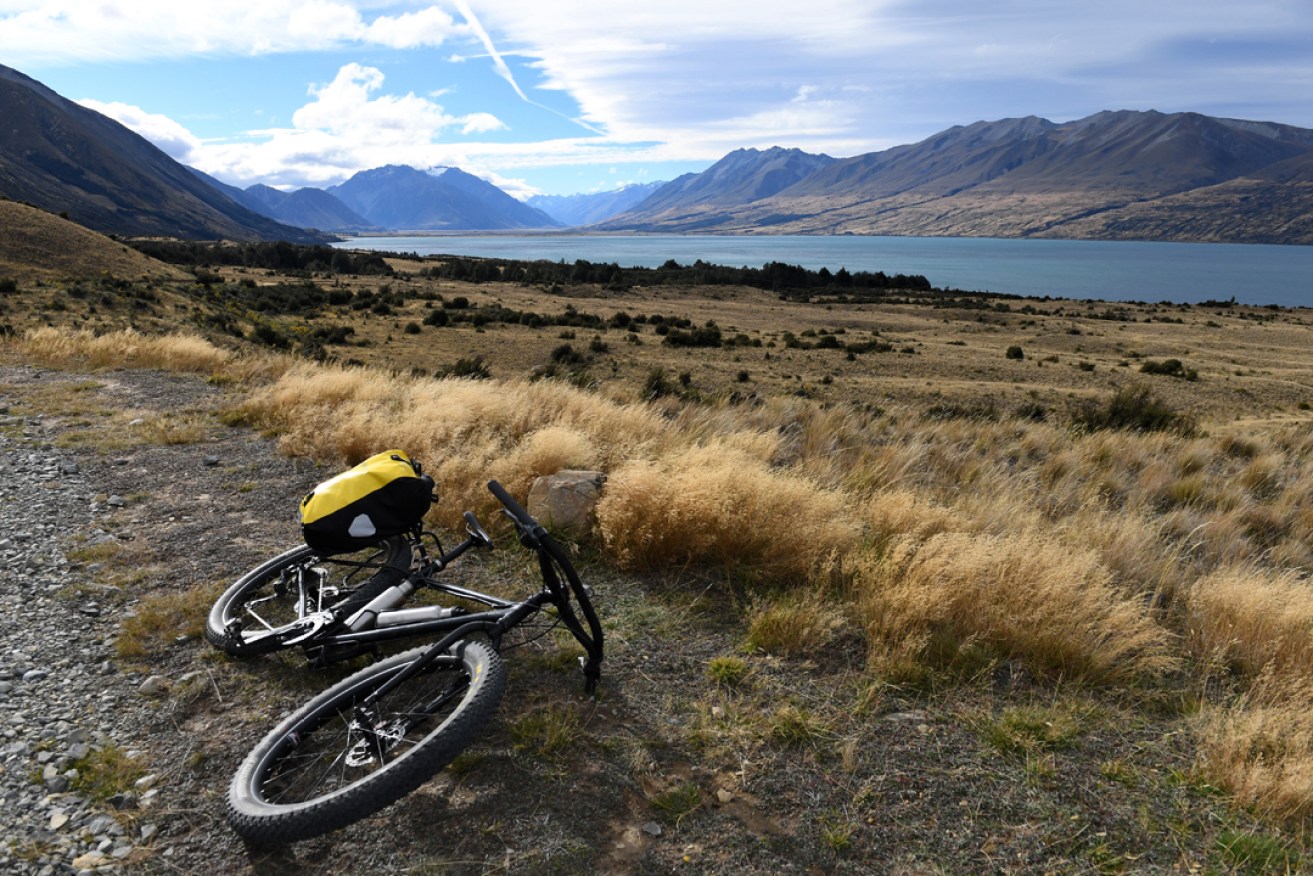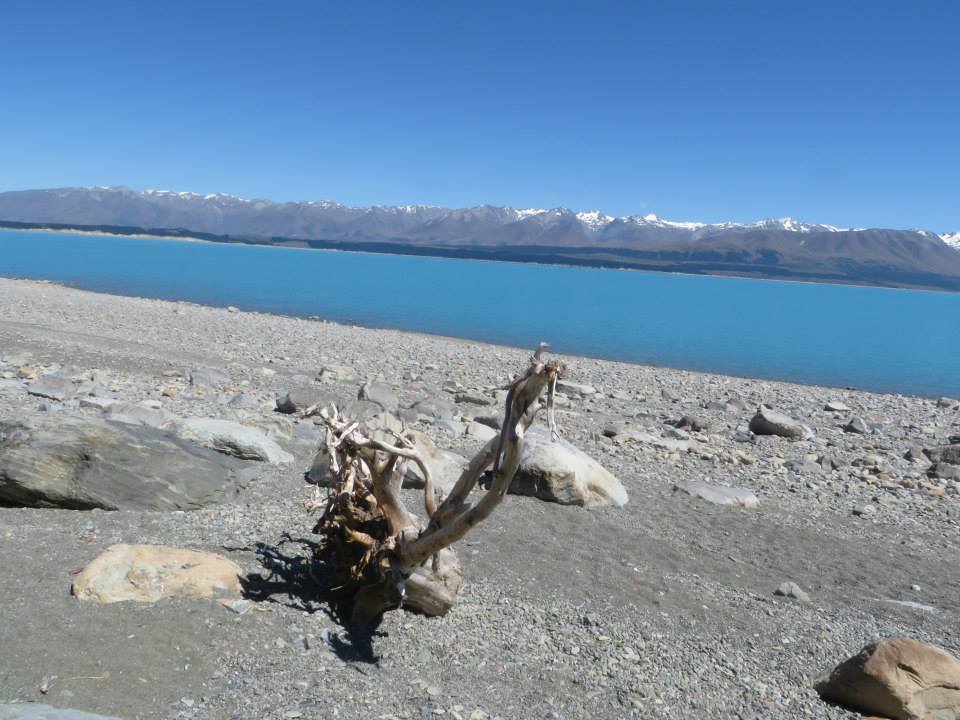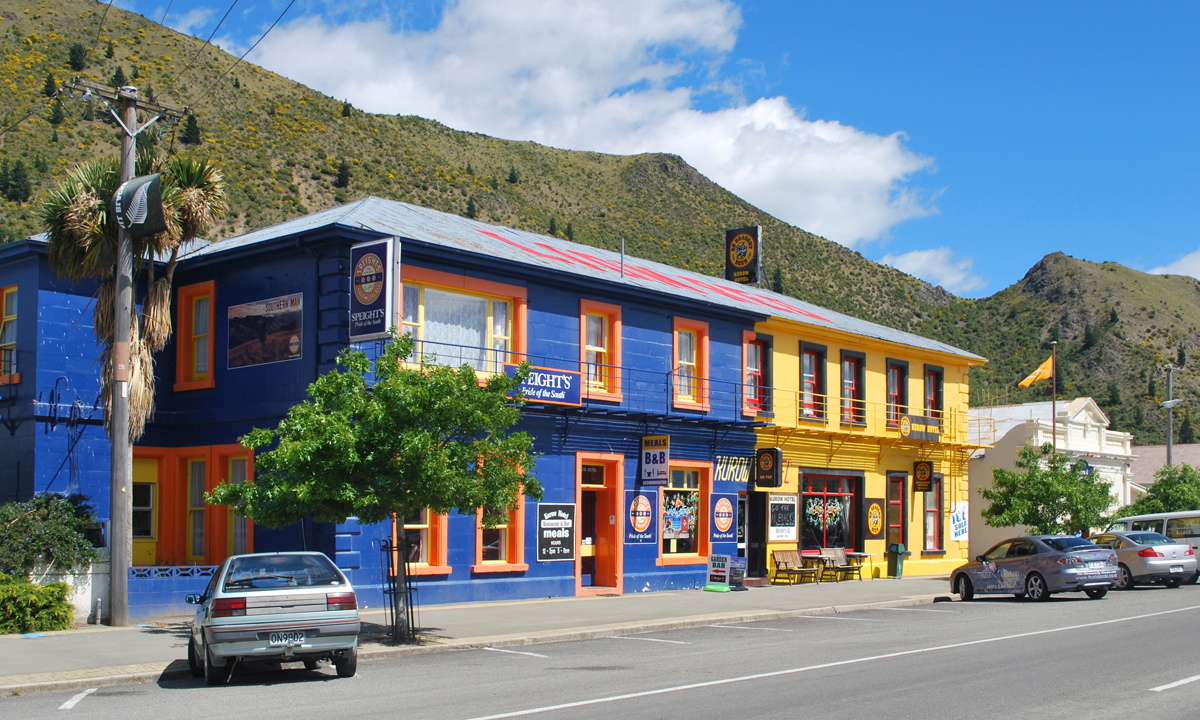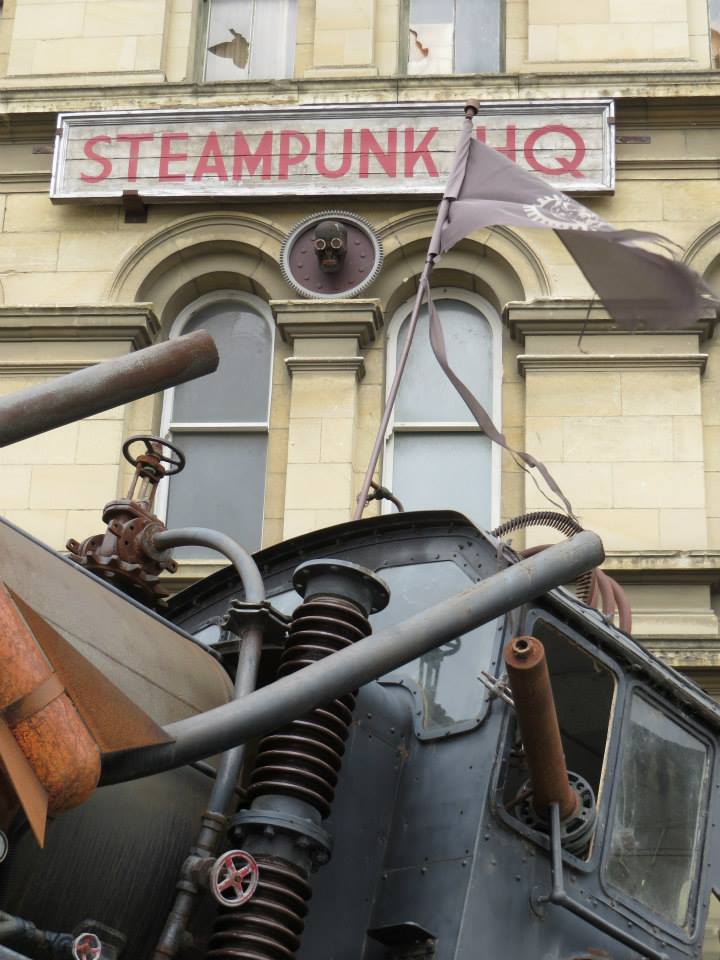Bike from New Zealand’s alps to the ocean
New Zealand’s Southern Alps are known for their chilly climate and cyclonic winds, but I still didn’t expect my downhill adventure along the Alps to Ocean cycleway to begin in a car.

Taking a break while riding from Lake Ohau to Omarama. Photo: Dan Peled / AAP
The 301km trail, known locally as the A2O, takes in some of New Zealand’s most incredible scenery. It traditionally starts at the foot of Mount Cook (Aoraki), New Zealand’s highest point at 3724 metres. But mine begins at Lake Tekapo, a stunning turquoise expanse lying at 701 metres above sea level.
It’s my first time exploring the South Island’s Southern Alps and I’m slightly apprehensive to be doing so on a mountain bike. While I’m a solid roadie, 300km of mountain biking is on another level – particularly in sometimes-120km/hr winds (the reason for the initial stint by car).
My trusty guides Liam and Dave from Adventure South tell me that superfit cyclists have done the A2O in one day. I’m not sure if this makes me feel better or worse.
The trail is the longest continuous ride in the country and descends 780 metres from the foot of Alpine peaks and the lakes of Mackenzie Basin, through the Waitaki river region and down to the lush green vegetation of the coastal plains. Yellow-on-black A2O signs along the way keep you on track.
I’m doing the four-day version, which translates to between 60km and 80km per day. You can also do an easier six-day version or just jump on a bike (rent one or BYO) and do it completely unassisted, in your own time.
The trail is classified two to three (easy to intermediate) but being reasonably fit can definitely help. If you’re more of a couch potato, an electric-assisted bike is on offer.
The hardest moments during my four days are braving the early morning cold. I wear every piece of Lycra I own, but it doesn’t insulate too well in temperatures of four degrees Celsius.
But once I get going, the ride is beautiful.
I knew New Zealand’s South Island would impress but the view from my saddle leaves me stunned. I swoon at the gleaming blue-green of glacial-fed Lake Pukaki as I roll along its shores. It looks stark against the grey-brown landscape, too cold to harbour trees. There’s low green shrubbery at ground level; snowy peaks on the horizon.

Glacial-fed Lake Pukaki. Photo: Suzie Keen
As I climb up to Tranbrae, the highest point on the trail, the only sound I hear is the wind around my head and tyres on gravel. It’s pure bliss. I look out across the valley to craggy, choppy mountains.
But the A2O is not just about landscape. I also get to witness the fascinating way humans have capitalised on the land’s natural resources.
Engineering geeks will revel in the sight of an elaborate network of hydro-electric power generators, harnessing lakes, dams and rivers to provide 50 per cent of the country’s electricity needs.
I also notice privately owned caravans dotted along camping spots along many parts of the trail. People just leave them there all year round, I’m told, and use them over summer. And the best part? No one steals or vandalises them.
Most of the A2O winds through crown land, but parts of it cut through private farms. Friendly farmers wave and turn off their tractor engines for a chat. I also encounter livestock, having to shoo cows off the track, and the occasional over-friendly dog.
I love passing through the small country towns where we settle in at the end of each day. Rugby fans will love one-street Kurow, the birthplace of rugby god Richie McCaw. A giant sign in his image welcomes me to “McCaw Country”. At the visitors’ centre, a collection box is raising funds for a bronze statue of their beloved hero. If you go for a meal at the local pub, be sure to brush up on your rugby knowledge first.

The Kurow Hotel. Photo: Matt / flickr
The small township of Omarama, another overnight stop, has open-air, glacial water hot tubs to soothe aching bodies. They are just what the doctor ordered.
My final destination is the pretty Victorian town of Oamaru on the coast. It’s pleasant to wander around the town’s historic precinct. This place was where the first shipment of frozen meat to Britain sailed from in 1882, kicking off a meat and dairy trade that became a major driver of the country’s economy in the 20th century.

Photo: Suzie Keen
Visitors to Oamaru also enjoy Steampunk HQ, a museum dedicated to the imagined inventions the Victorians may have created for the modern world, and Scotts Brewing Co, which sells naturally brewed gluten free beer among other delights.
But my favourite thing about Oamaru is the extremely cute blue penguins rushing out of the ocean. The world’s smallest penguins choose to nest under a cliff along the historic harbour foreshore. So very convenient.
The wild, eastern shore of New Zealand is a lovely place to reflect on my achievement. Once I got going in the mornings (and my muscles warmed), the ride was easier than I expected. But the scenery way surpassed my expectations.
In fact, it’s made me want to ditch my roadie for a mountain bike.
Getting there: From Adelaide, you can fly to Christchurch via Auckland, Melbourne, Sydney or Brisbane.
Staying/playing there: Adventure South offers tours of the A2O of varying duration, with overnight accommodation included in the tour packages. Prices vary. For info, visit www.adventuresouth.co.nz.
The Alps to Ocean cycle trail is suitable for all abilities of cyclists, and includes a mixture of off and on-road trail, which can be enjoyed in sections or in its entirety. For more info, visit the New Zealand Cycle Trail website.
* The writer travelled as a guest of Tourism New Zealand.
-AAP




